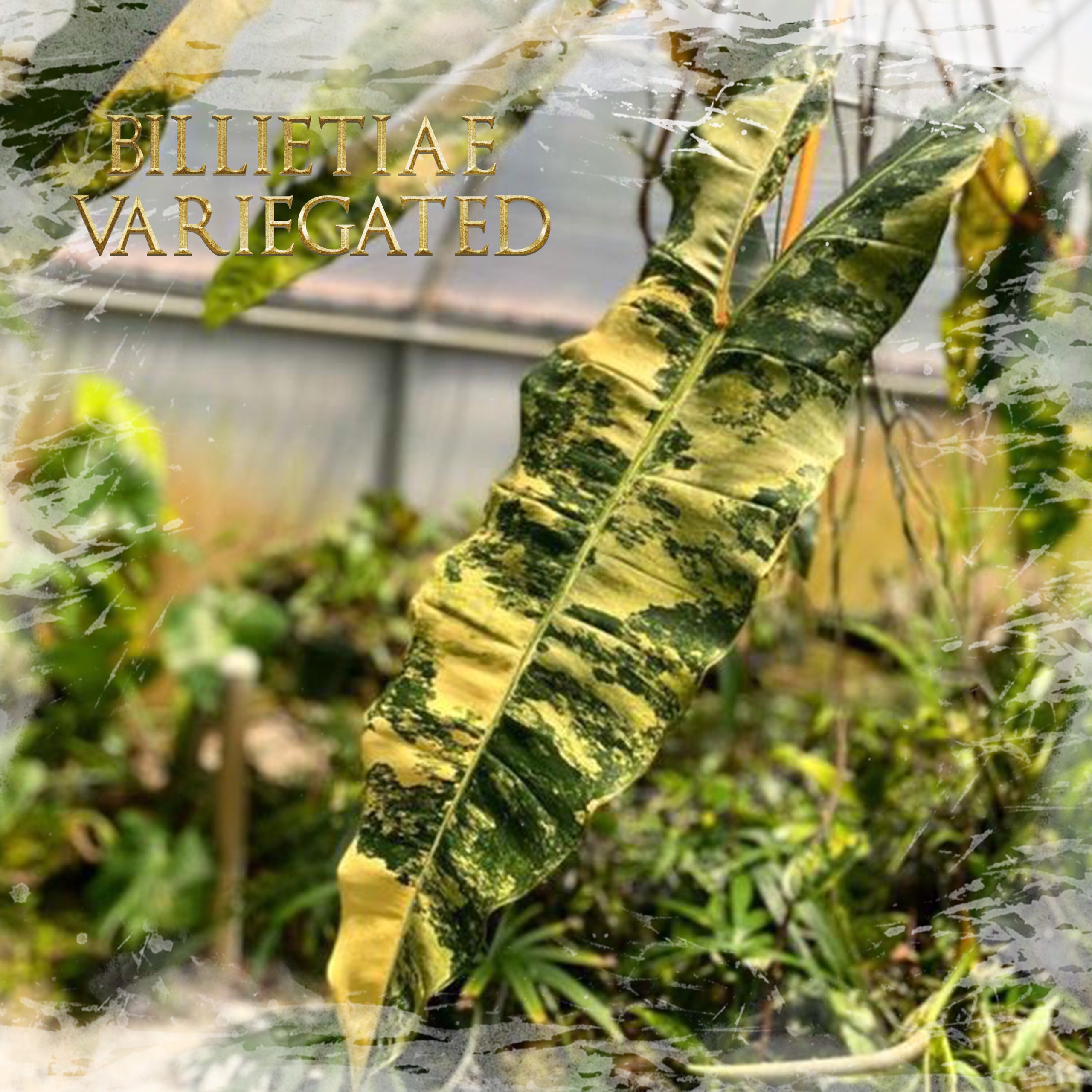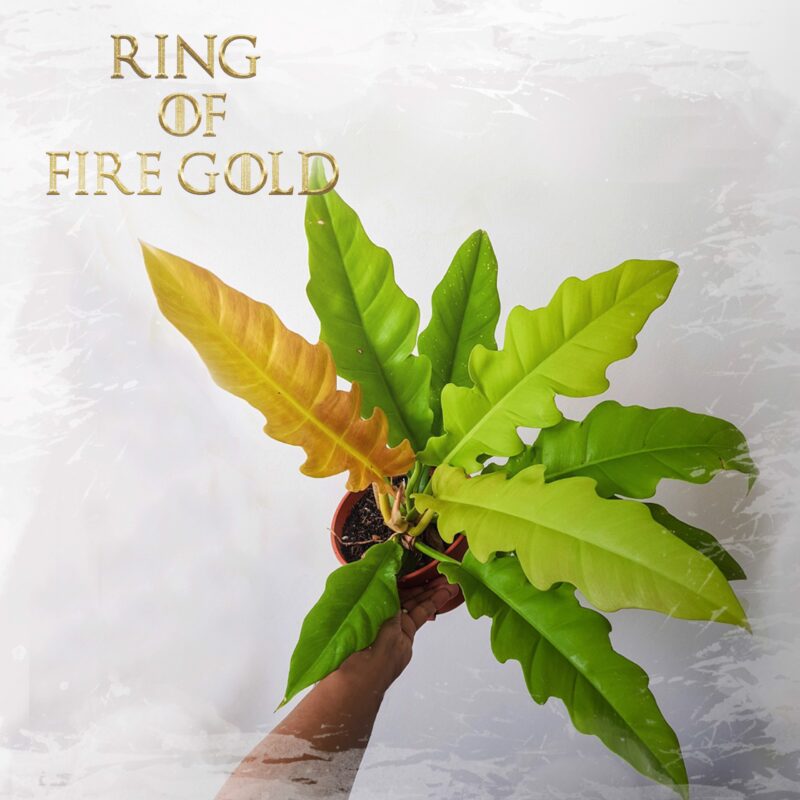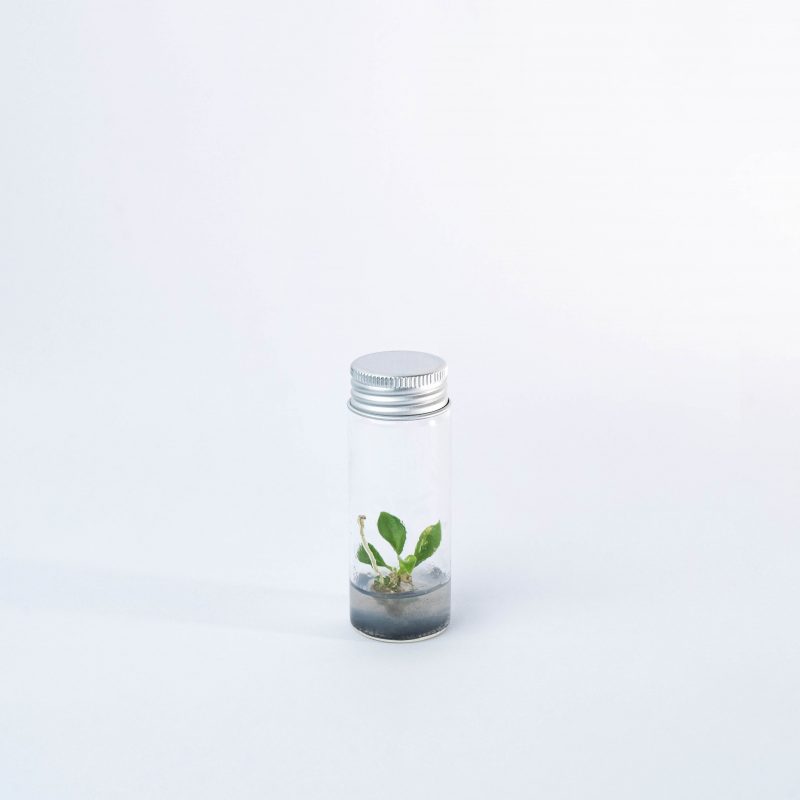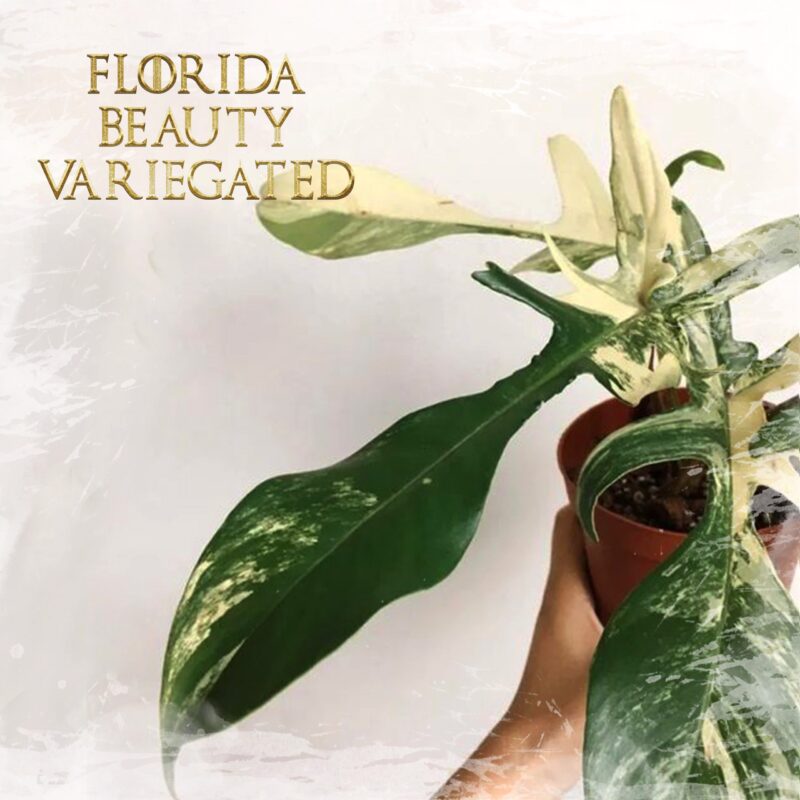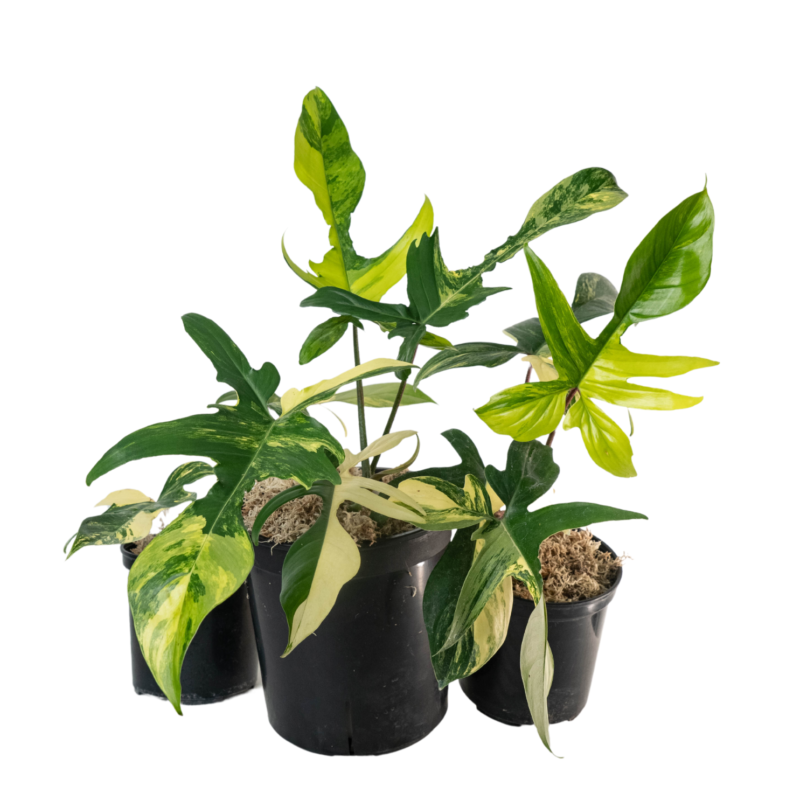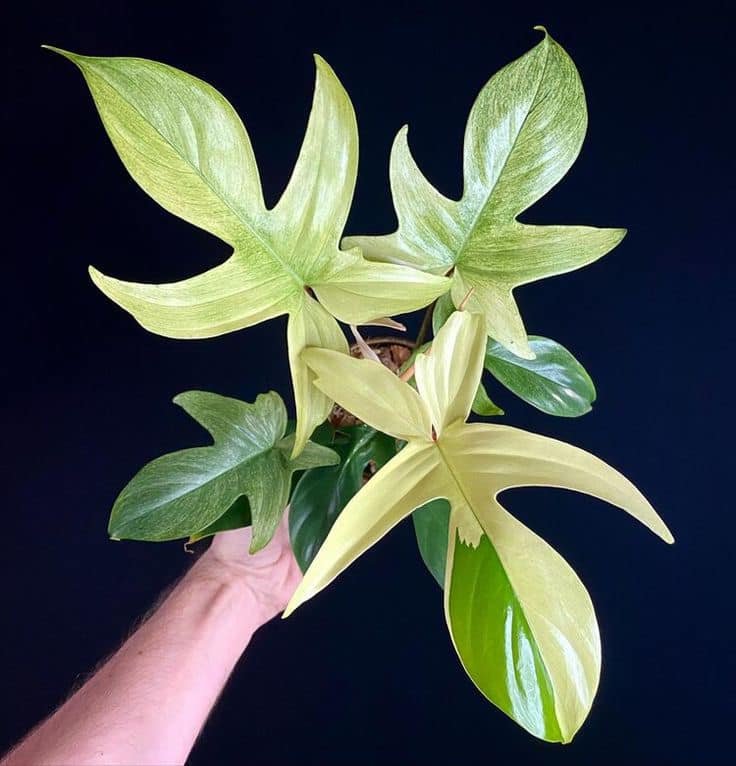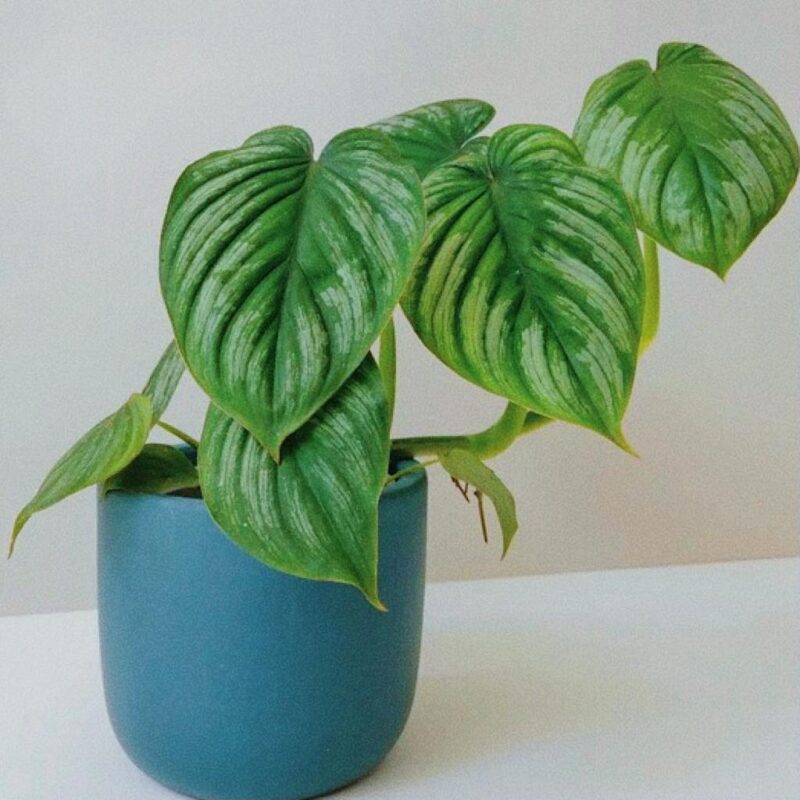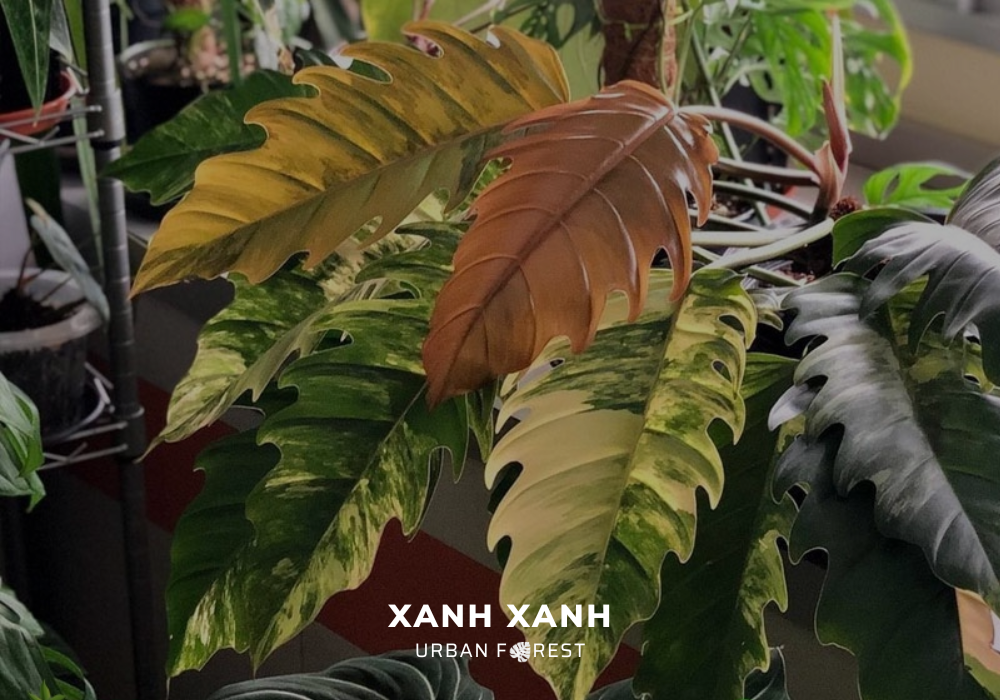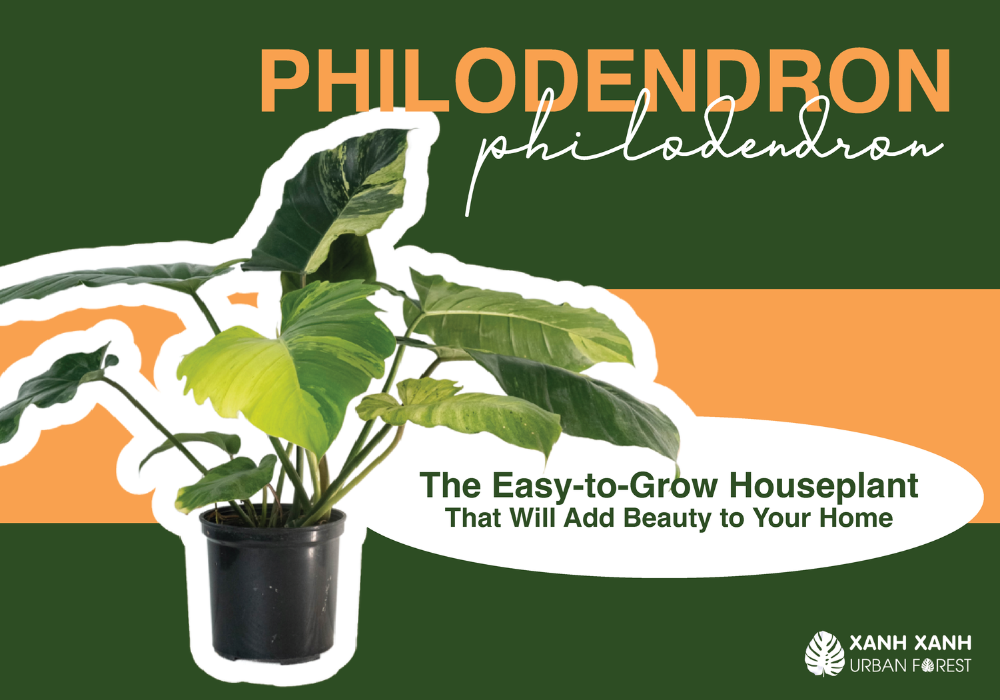Please leave your information to download quote and receive latest updates on products!
Philodendron Billietiae Variegated
Philodendron Billietiae Variegated must be one of Philodendrons most gorgeous! With its brilliant orange petioles and green leaves it truly puts on a display as it climbs up a pole. The leaves may grow almost Three ft long.
Please keep in mind that all of the plants we sell are bare roots. Because of the extended lack of water following a long-distance trip, all Alocasia sp. leaves turn yellow and dry. Plant it in well-draining soil, such as a mixture of coir fiber and perlite, as long as there is no root rot. After some time, new healthy green leaves will emerge. Before placing any orders, Please read the terms and conditions carefully. Thank you very much!
Contact
Variegated Philodendron billietiae has long been regarded as one of the aroid world’s holy grails. The specimen we have for sale has excellent variegation, a strong root system, and is rapidly growing. Don’t let this opportunity pass you by! This is one of the most sought-after and scarce plants on the market. The plant’s first six photos were taken last week. The remaining photos were taken in mid-October, when the plant was repotted.
Philodendron billietiae has long, strap-shaped leaves with lovely orange petioles. In nature, it grows as an epiphyte, and the elongated leaves and petioles aid in stretching out to receive light. It’s a must-have for any collector.
This variety, like most Philodendrons, prefers moist but well-draining soil and some humidity. It should be staked or allowed to climb up moss poles as it grows. In higher humidity environments, numerous aerial roots form, giving the plants a lovely appearance.
Please keep in mind that each plant is a one-of-a-kind individual due to the nature of variegation. There will be some variation between plants and even between leaves on the same plant. As a result, we are unable to guarantee a specific amount of variegation, particularly in younger plants.
| Size | Baby plant, Mature, Tissue-cultured |
|---|
Related Blog

